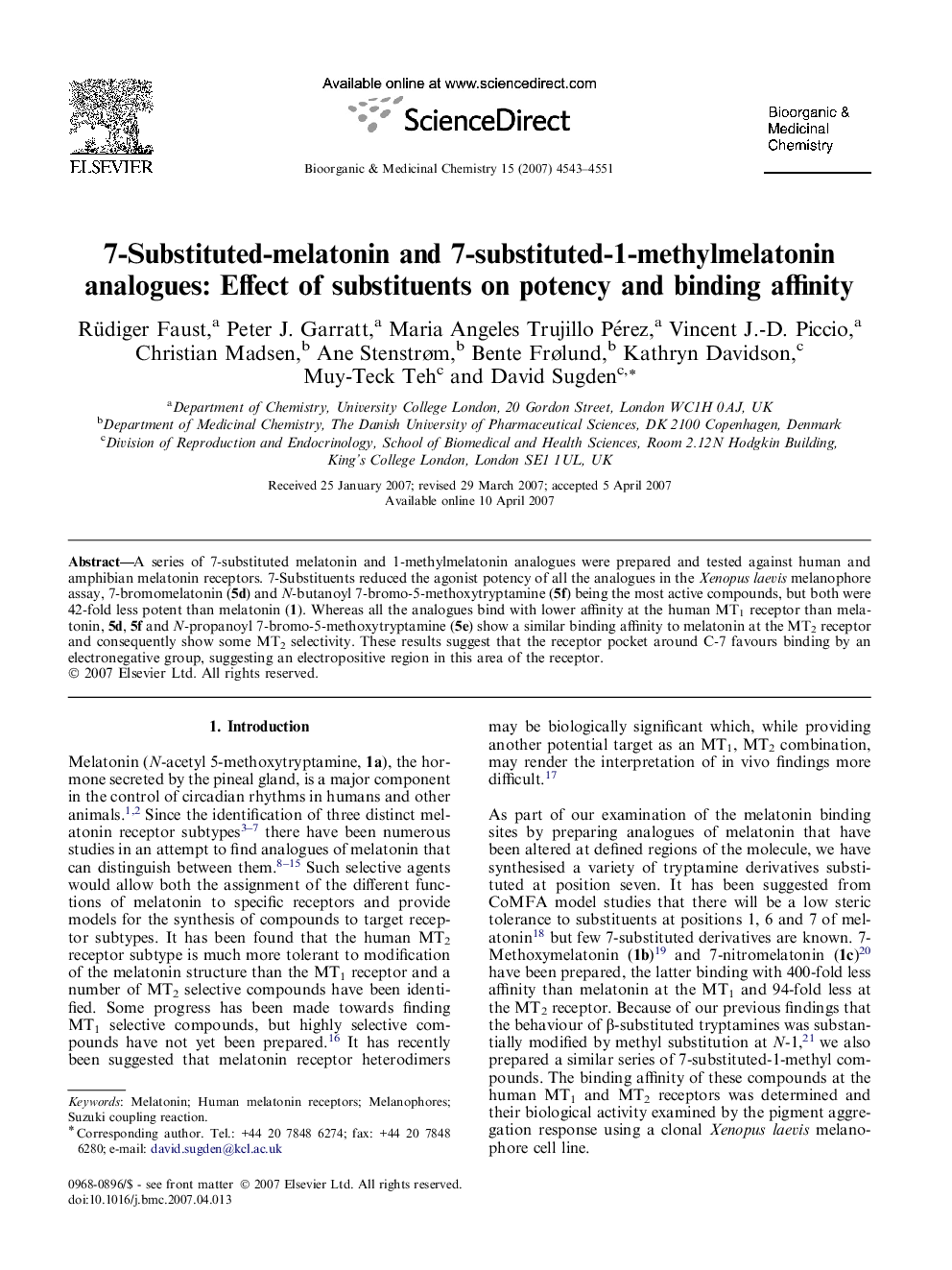| کد مقاله | کد نشریه | سال انتشار | مقاله انگلیسی | نسخه تمام متن |
|---|---|---|---|---|
| 1362843 | 981497 | 2007 | 9 صفحه PDF | دانلود رایگان |

A series of 7-substituted melatonin and 1-methylmelatonin analogues were prepared and tested against human and amphibian melatonin receptors. 7-Substituents reduced the agonist potency of all the analogues in the Xenopus laevis melanophore assay, 7-bromomelatonin (5d) and N-butanoyl 7-bromo-5-methoxytryptamine (5f) being the most active compounds, but both were 42-fold less potent than melatonin (1). Whereas all the analogues bind with lower affinity at the human MT1 receptor than melatonin, 5d, 5f and N-propanoyl 7-bromo-5-methoxytryptamine (5e) show a similar binding affinity to melatonin at the MT2 receptor and consequently show some MT2 selectivity. These results suggest that the receptor pocket around C-7 favours binding by an electronegative group, suggesting an electropositive region in this area of the receptor.
Figure optionsDownload as PowerPoint slide
Journal: Bioorganic & Medicinal Chemistry - Volume 15, Issue 13, 1 July 2007, Pages 4543–4551